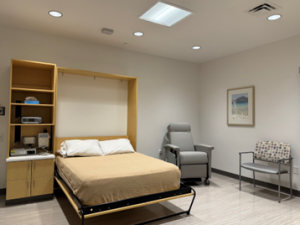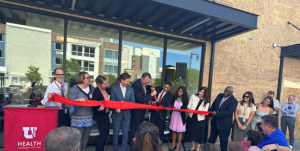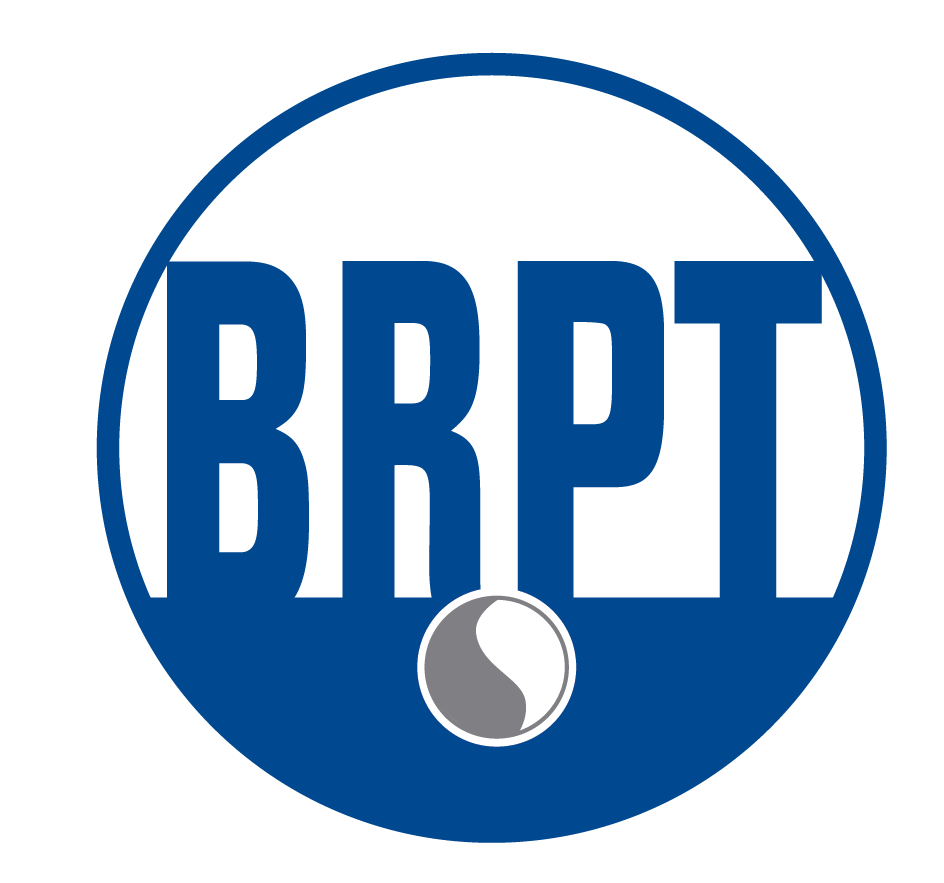By BRPT’s Communications Director, Lydia Pelliccia
When the University of Utah set out to design a state-of-the-art Sleep/Wake Center, they turned to the Sleep Lab Manager, Jason Burch, RPSGT whose vision and experience would be instrumental in reimagining what a sleep lab could be. We sat down with this key contributor to learn how patient experience, technology, and innovation came together to create a welcoming, cutting-edge facility poised to advance sleep research and care.
Putting Patient Comfort First
From the outset, optimizing space and creating a welcoming bedroom environment were top priorities. The goal was clear: put patients at ease and design for future growth. “Patient experience was a great consideration for this new lab,” Jason explains. “We wanted them to feel comfortable in this space.” Unlike traditional sleep labs, which often feel cramped and clinical, this new center features open, collaborative spaces for staff and warm, inviting rooms for patients.
Redefining the Sleep Lab Experience
The new Sleep/Wake Center stands apart from older labs in several key ways:
• Two exam rooms are equipped with dental chairs, allowing on-site dental adjustments and fittings for mandibular advancement devices (MAD).
• All bedrooms feature Murphy-style beds, transforming from exam rooms by day to restful bedrooms by night.
• Adjustable lighting in each bedroom lets patients and staff control brightness and color temperature, ensuring comfort and optimal conditions for both sleep and exams.
These thoughtful touches not only enhance patient care but also make the space more functional and adaptable for staff.

Overcoming Challenges with Innovation
Transforming an older building into a modern sleep center came with its share of hurdles. “Because of the age of the building, some rearranging of the bedrooms had to be done to accommodate plumbing and structural components,” Jason recalls. Even after moving in, sound mitigation remained a challenge. Despite extra insulation, noise from the hallways was still audible in the bedrooms. The solution? White noise speakers in each room and runner rugs in the hallways, creating a quieter, more restful environment for patients.
Staying Ahead in Sleep Medicine
Keeping pace with rapid advancements in sleep technology is no small feat. The team designed the center with flexibility in mind, leaving space in bedside cupboards for future equipment upgrades. “We try to think of everything, but left room in the bedside cupboards for additional equipment as things may change,” Jason notes.
A Vision for the Future
What impact does this new lab hope to have? Jason is optimistic: “We hope that patients will speak highly of their experience at our lab. The idea of coming in for a sleep study can be a mental obstacle as they picture a hospital stay, but our lab is not like that.” By creating a space that feels more like home than a hospital, the team aims to make sleep studies less intimidating and more accessible.
Early Successes and Feedback
Already, the center is receiving positive feedback from both patients and researchers. Patients appreciate the comfort and thoughtful design, while researchers benefit from the flexible, high-tech environment that supports cutting-edge sleep science. The University of Utah’s new Sleep/Wake Center stands as a testament to what’s possible when patient-centered design and technological innovation go hand in hand—thanks to the dedication and vision of the entire University of Utah team who brought this project to fruition.

